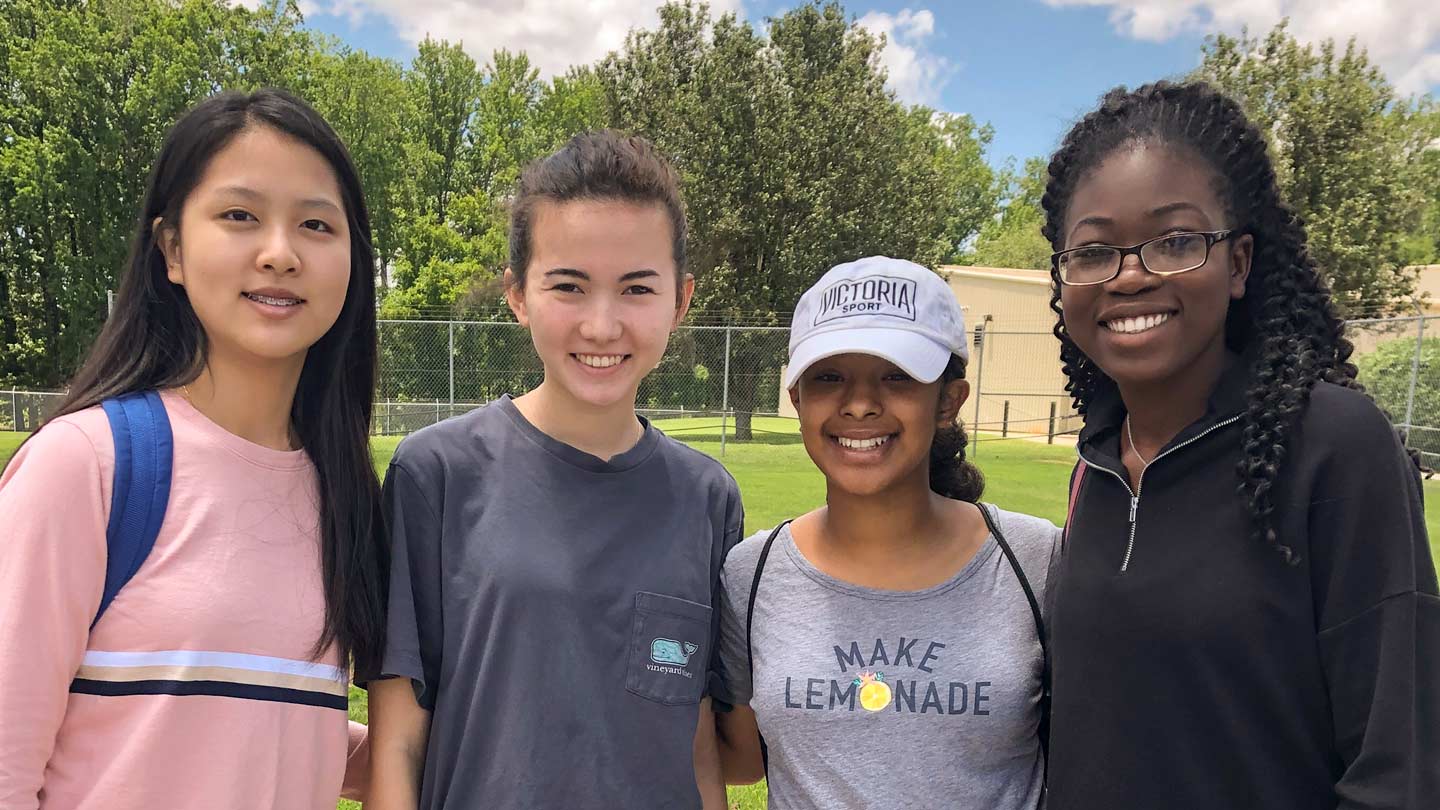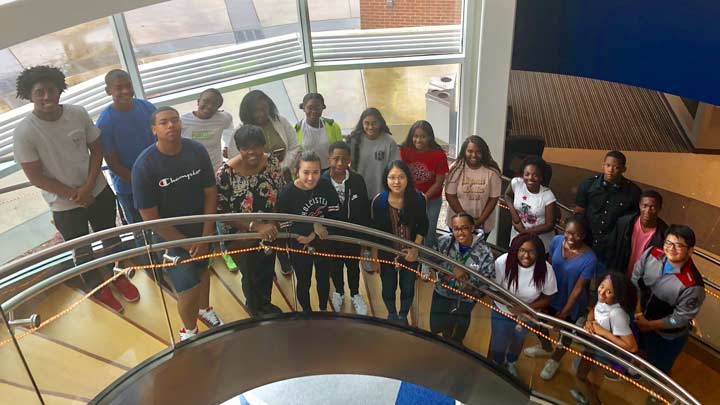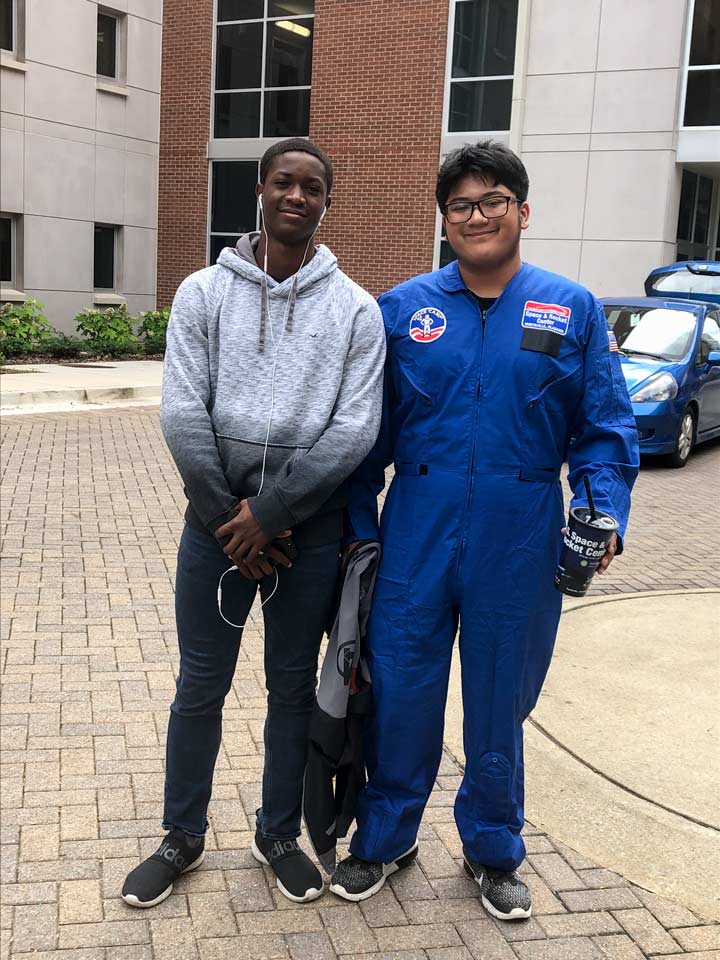
Each summer, UAH gives students from rural, frontier, or other targeted outreach schools the opportunity to take part in hands-on research in the STEM fields through two programs: the Research and Engineering Apprenticeship Program and the Louis Stokes Alliances for Minority Participation program.
Rosemary Robinson
Each summer, The University of Alabama in Huntsville (UAH) welcomes to its campus a group of hard-working high achievers from rural, frontier, or other targeted outreach schools to take part in two programs designed to give historically underrepresented students hands-on experience in the science, technology, engineering, and math (STEM) fields.
The first, the Research and Engineering Apprenticeship Program (REAP), is funded by the Army Educational Outreach Program (AEOP) and is overseen on the UAH campus by Dr. Bernhard Vogler, an associate professor in the College of Science’s Department of Chemistry. The second, the Louis Stokes Alliances for Minority Participation (LSAMP), is funded by the National Science Foundation and overseen on the UAH campus by Rosemary Robinson, the diversity initiatives coordinator in the Office of Diversity, Equity, and Inclusion (ODEI).

The students selected to participate in the two programs were immersed in hands-on research being conducted on the UAH campus.
Rosemary Robinson
"Normally, parents pay three or four thousand dollars for a program like this, but we are in a fortunate situation," says Dr. Vogler, explaining that participants in both REAP and LSAMP receive a stipend in addition to the priceless opportunity to gain hands-on research experience and early exposure to life as a college student.
Yet despite co-existing at UAH, the two programs were initially administered as separate entities until four years ago, when Dr. Vogler first became a faculty mentor for REAP. "Once I realized that there were other faculty members on campus mentoring students through REAP, though, I said why don’t we collaborate?" he says. "Then we all collaborated with LSAMP, and now everything is organized more efficiently."
It helps that eligibility criteria for the two programs overlap significantly. Both require applicants to be underrepresented minority students who are U.S. citizens or permanent residents interested in pursuing a STEM degree. But unlike LSAMP, REAP also gives priority to women, students who qualify for free or reduced lunches, students who speak English as a second language, and students who are first-generation college students. "Because the criteria for LSAMP isn’t as strict as it is for REAP, we’ll often take on the good students who didn’t get selected for REAP," says Robinson.

Participants in the REAP and LSAMP programs enjoyed weekly outings to area businesses and attractions, which allowed them to engage and network with professionals in the STEM fields.
Rosemary Robinson
Dr. Vogler estimates that UAH received approximately 60 applications for this year’s REAP, which he and his colleagues in the program then filtered according to the eligibility criteria. "We narrowed that list down to about 15 or 20 students, and in April, we brought them in for an interview so that we could see how they presented themselves and engaged with us," he says. "Are they confident? Because we want to teach them to be independent as well, so we’re not always looking over their shoulder." Of those interviews, 12 were ultimately selected for REAP with two more joining LSAMP.
Both programs kicked off on June 3, and for five weeks, the 14 students spent each weekday from 9 a.m. until 3:30 p.m. immersed in hands-on research being conducted by Dr. Vogler and colleagues. "I had three students who worked with me and my undergraduate and graduate students on my research into the structure elucidation of natural products by nuclear magnetic resonance," he says. The remaining 11 were assigned to a selection of other projects and mentored by the following:
- Dr. John Foster, chair of the Department of Chemistry, whose research focuses on the design of novel devices to answer medical and environmental problems
- Dr. Robert McFeeters, an associate Professor in the Department of Chemistry, whose research focuses on antimicrobial development and the understanding the macromolecular interactions underlying inhibition, with assistance from graduate student and Adriel D. Johnson Sr. fellow Gorden Burkes
- Dr. Sharifa Love-Rutledge, an assistant professor in the Department of Chemistry, whose research focuses on diabetes and insulin resistance
- Dr. Anusree Mukherjee, an assistant professor in the Department of Chemistry, whose research focuses on using models that mimic what nature is doing and transferring that into chemical processes
- Dr. Tingting Wu, an assistant professor in the College of Engineering’s Department of Civil and Environmental Engineering, whose research focuses on sustainable water/wastewater treatment, water reuse, and storm water/non-point source pollution control
- Dr. Yu Lei, an associate professor in the College of Engineering’s Department of Chemical and Materials Engineering, whose research focuses on the development of new techniques and processes for a wide variety of applications such as nanoelectronics, catalysts, batteries, solar cells and other energy technologies

Program participants partnered with their near-peers, UAH undergraduates and graduates, to get a better understanding of what to expect as a major in a STEM field.
Rosemary Robinson
To give the students a break from the lab – as well as an opportunity to network with professionals in their field – Robinson hosted a field trip to a related location each Thursday. "We visited BASF Corporation’s chemical plant, the Southeast Water Treatment Plant, UAH’s Propulsion Research Center, UAH’s Severe Weather Institute – Radar and Lightning Laboratories, and UAH’s Software Safety and Security Engineering Laboratory, where the students took part in an immersive driving simulation," she says. "By engaging with researchers and scientists working in their respective industries, the students got to see how different research projects are being done in the real world and the options they might have for different career paths in the STEM fields."
Those careers, of course, are a long way off. But now that the programs have ended for the summer, the students who participated are one step closer than they would otherwise have been. By way of example, Dr. Vogler points to a former REAP participant who volunteered to continue working in his lab after the program’s conclusion. "She ended up turning her research into a project for her school’s science fair and making it to the Intel International Science and Engineering Fair," he says. "A differentiator like that could mean entry into an Ivy League university."
Another, Daniel Torres, completed both REAP and LSAMP over two consecutive summers and is now at UAH pursuing his undergraduate degree in mechanical engineering. "Some things that made me want to participate included the academic support, guidance, and resources that I would receive," says the sophomore from Harvest, Ala. "What I took away was time management and stress management skills, and the importance of research and making connections." Now, he says, "UAH is a great university for students looking to do research," citing its "friendly and encouraging professors" and its Peer Assisted Study Sessions as especially valuable resources.
In the end, it’s success stories like these that keep Dr. Vogler and Robinson coming back as program administrators despite the hard work involved. They even have plans to expand their pool of mentors going forward, so that students can choose from a more diverse selection of research projects. "We are currently talking to additional faculty in the Departments of Biology, Chemistry, and Computer Science about participating," says Dr. Vogler. That, of course, will depend on availability of funding. But neither he nor Robinson are deterred. "All of us are looking forward to re-applying in the coming years!"